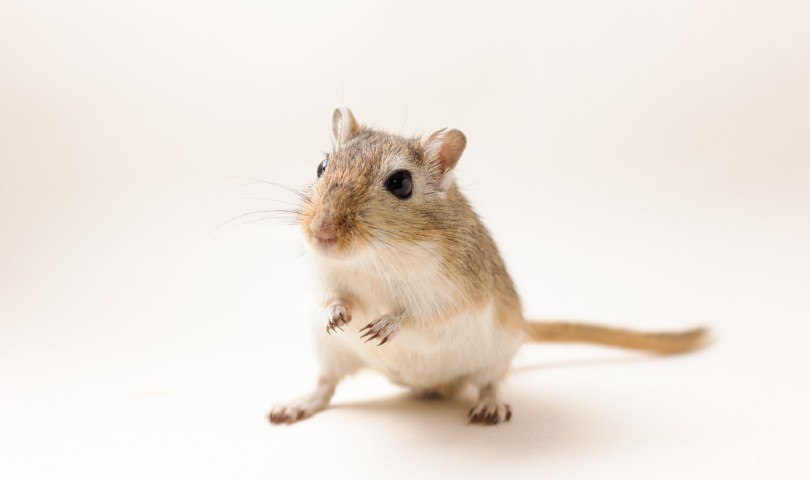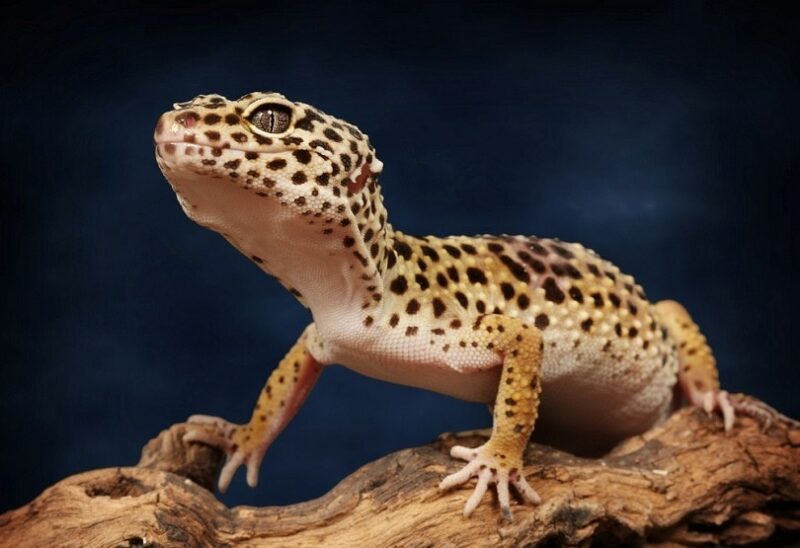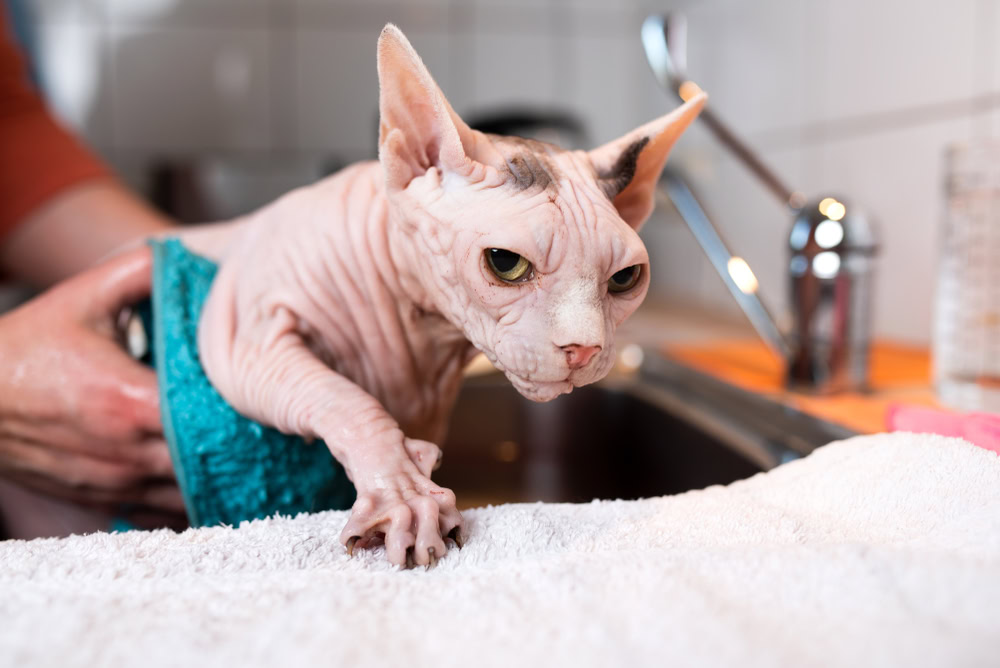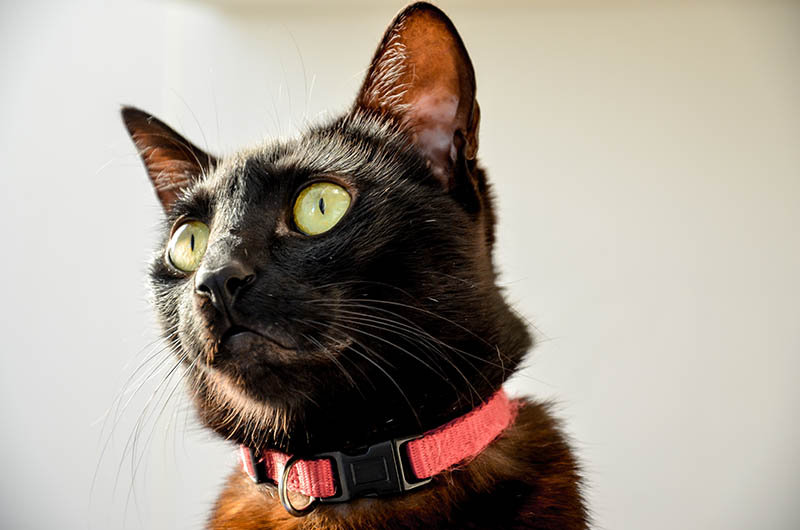Over 5 million American households have welcomed small animals like gerbils into their homes.1 It’s easy to see why, too. They cost less when compared to dogs, for instance, which can cost you well over $1,000 a year.2 Gerbils are another example of animals that have evolved both naturally and with the assistance of selective breeding.
The range of colors reflects the fact that gerbils are domesticated animals. Evolution selects colors and patterns that give the rodents a competitive edge. After all, camouflage is the key to success and survival. Many of the variations that you’ll see are not adaptive. Instead, they are aesthetic choices that sometimes are the result of mutations.
Selective breeding is an evolving practice. As soon as the stability of the color emerges, you’ll likely see more variations come on board. Trends and fashion often dictate the changes and drive the price of gerbils. If cost is an issue, it’s a vital consideration. Let’s explore the range of options if you want something different than the run-of-the-mill gerbil.

The 12 Gerbil Colors and Patterns
1. Agouti
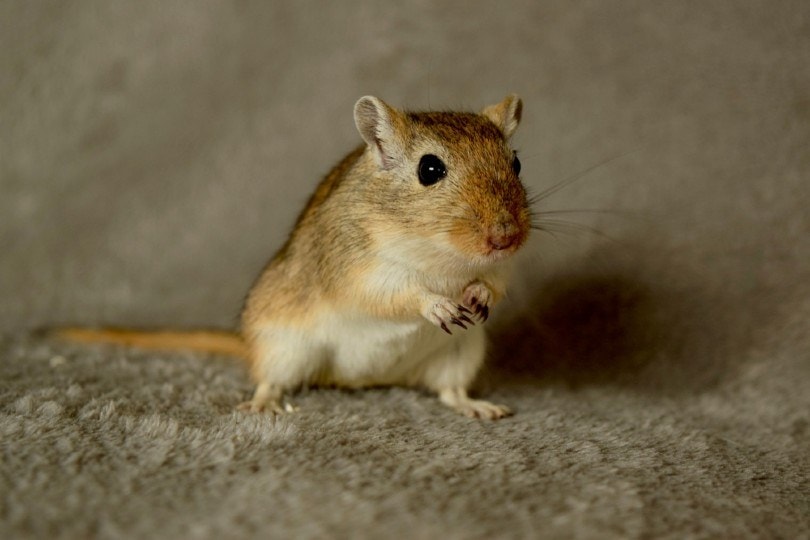
If you find a gerbil in the wild, agouti is the color you’d likely see. Its coat is a combination of white and brownish hairs. This pattern provides excellent camouflage. The gerbil is a prey species and benefits from being less obvious. This coloration allows the gerbil to blend into the background to escape detection.

Argente
The word argente means silver in French. However, it also forms the basis for some variations on this theme.
2. Cream Argente
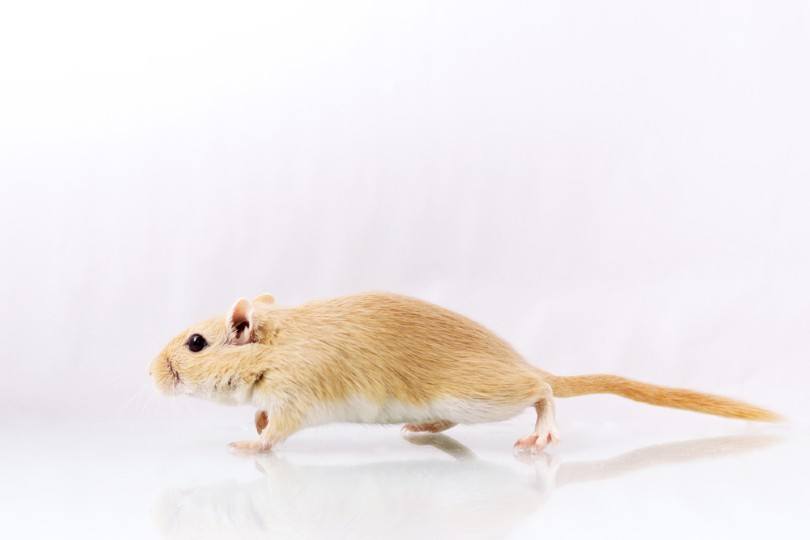
This gerbil’s underside is white, offset by the lighter color on the rest of its body. Its skin starts pink before it morphs into its namesake shade. The animal’s eyes are also red, a trait typical of albino animals.
3. Golden Argente

The golden argent color is darker than the previous one, and the same red eyes define this variation. However, that’s only a temporary characteristic since the eyes will lighten with age.
Honey
The term honey describes a warm tan color reminiscent of the food. It’s a shade darker than the last set with these typical hues.
4. Cream
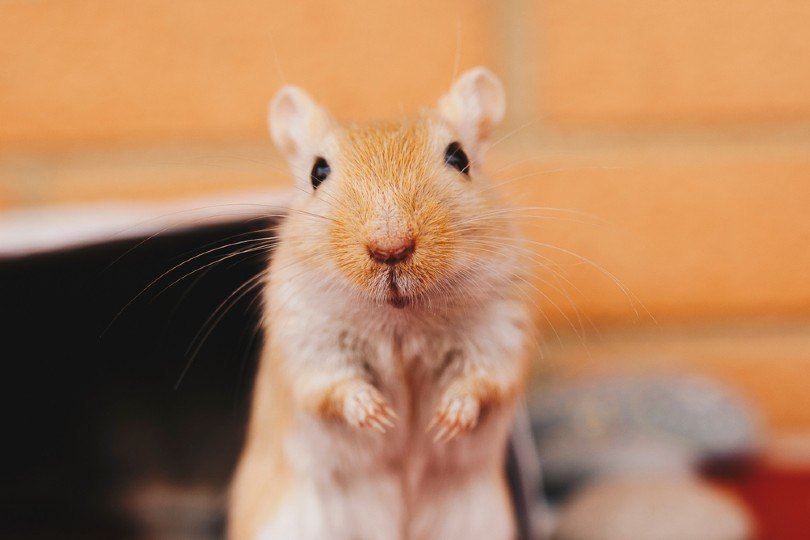
This variation is two-toned with a deeper honey color on the gerbil’s back. The other defining characteristic is a darker patch on its forehead. While its paws are flesh-colored, the gerbil’s eyes are black.
5. Honey Dark-Eyed
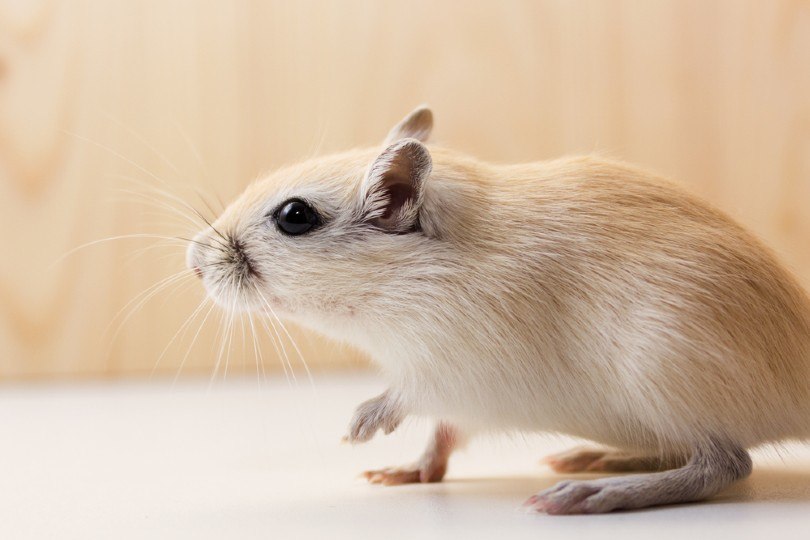
As the name implies, the gerbil’s eyes are black, and the belly is white. It’s a deeper honey color that is quite attractive.

Gems
Several gerbil colors co-op the names of different gems that are ideal descriptors of the shades. We think they are appropriately named and show nuanced color variations.
6. Sapphire
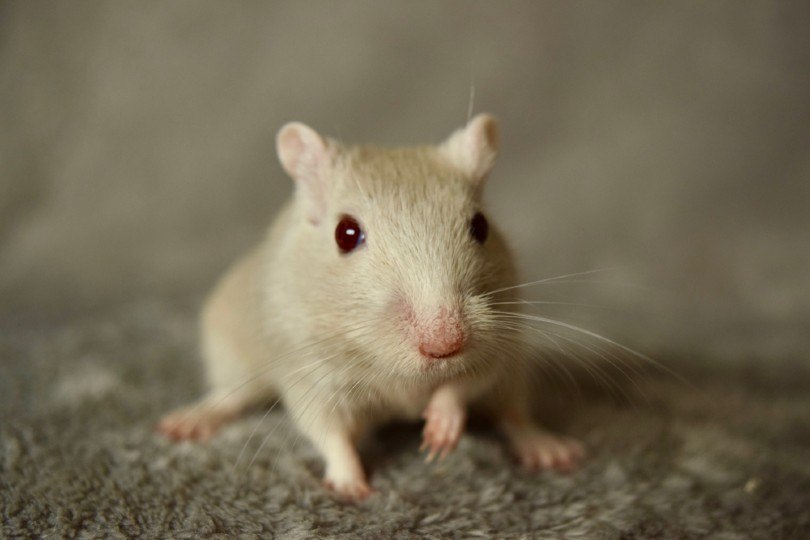
This color describes the undertone more than the actual color. It denotes a cool white that gives the gerbil its bluish hue.
7. Topaz
This color variation is interesting. It’s a warm color like the gem. The gerbil has a white belly that accentuates the warmth of the hue. The eyes are red, which is a striking contrast.
8. White Ruby Eyed
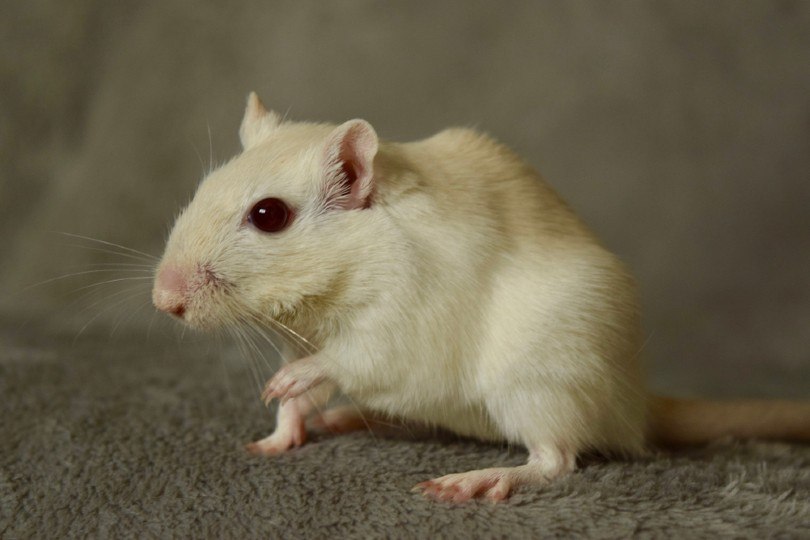
This color embraces the contrast between ruby-red eyes and a white body that looks fantastic in this small animal.
- See Also: Do Gerbils Bite? All You Need To Know!
9. Pearl

The pearl brings warmth to the stark, cold white shade. It adds a welcome variation to this hue with elements of blue, pink, and gold.
Other Animals
Some gerbil colors look to other examples in nature for their inspiration. They are surprisingly accurate in their patterns, which makes them even more interesting.
10. Siamese
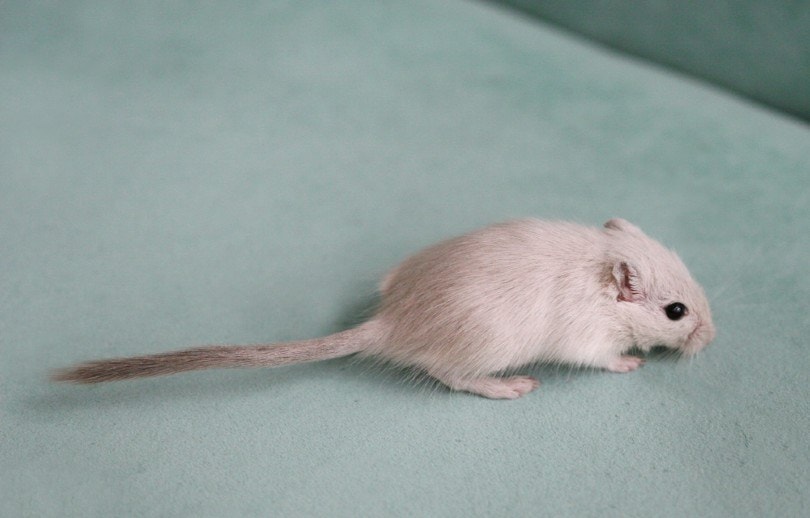
The Siamese gerbil has the rich silver color that defines the Siamese cat breed. This variation brings that same beautiful tone to the gerbil.
11. Himalayan
The Himalayan color pattern is similar to the previous one, with greater contrast between the light and dark colors. The combination works as well in cats as it does in gerbils.
12. Burmese
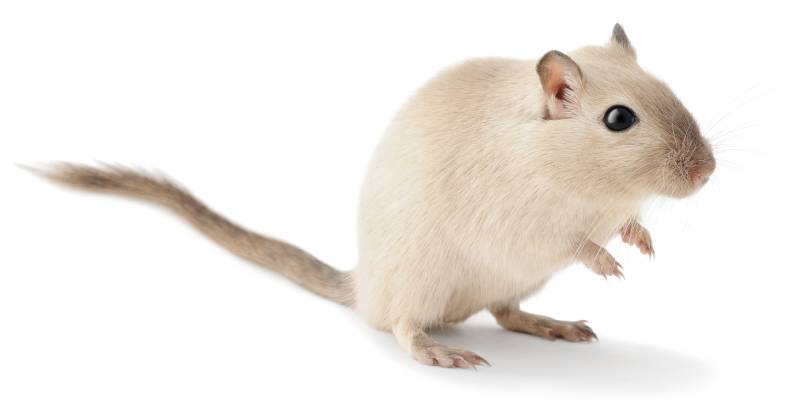
The Burmese also share similar characteristics, although the contrast is less stark. It’s a gorgeous variation that works on so many levels.

Final Thoughts
Our roundup only scratches the surface of the available gerbil colors and patterns. Selective breeding has that wild card of mutations that mixes up the coloration results. In the wild, gerbil colors, besides agouti, are often a liability. Today, they are an opportunity to expand the profile of this small animal. In any case, gerbils are a lovable pet that can make an excellent choice for a youngster to learn the necessary responsibility.
See also:
- How Long Can You Leave a Gerbil Home Alone? Vet Approved Facts & FAQ
- Gerbil vs Guinea Pig: Key Differences (With Pictures)
Featured Image Credit: Svetlanistaya, Shutterstock
